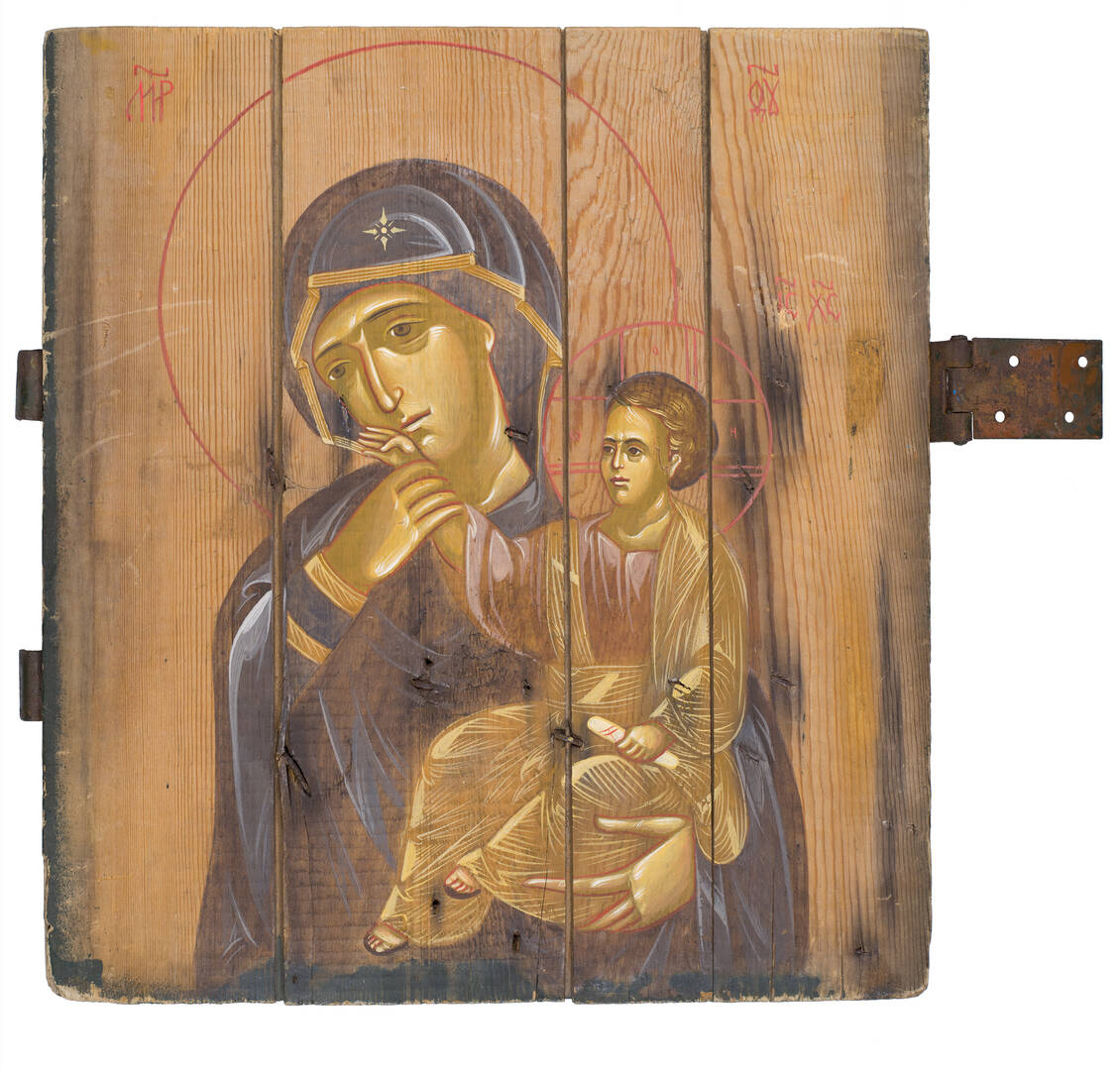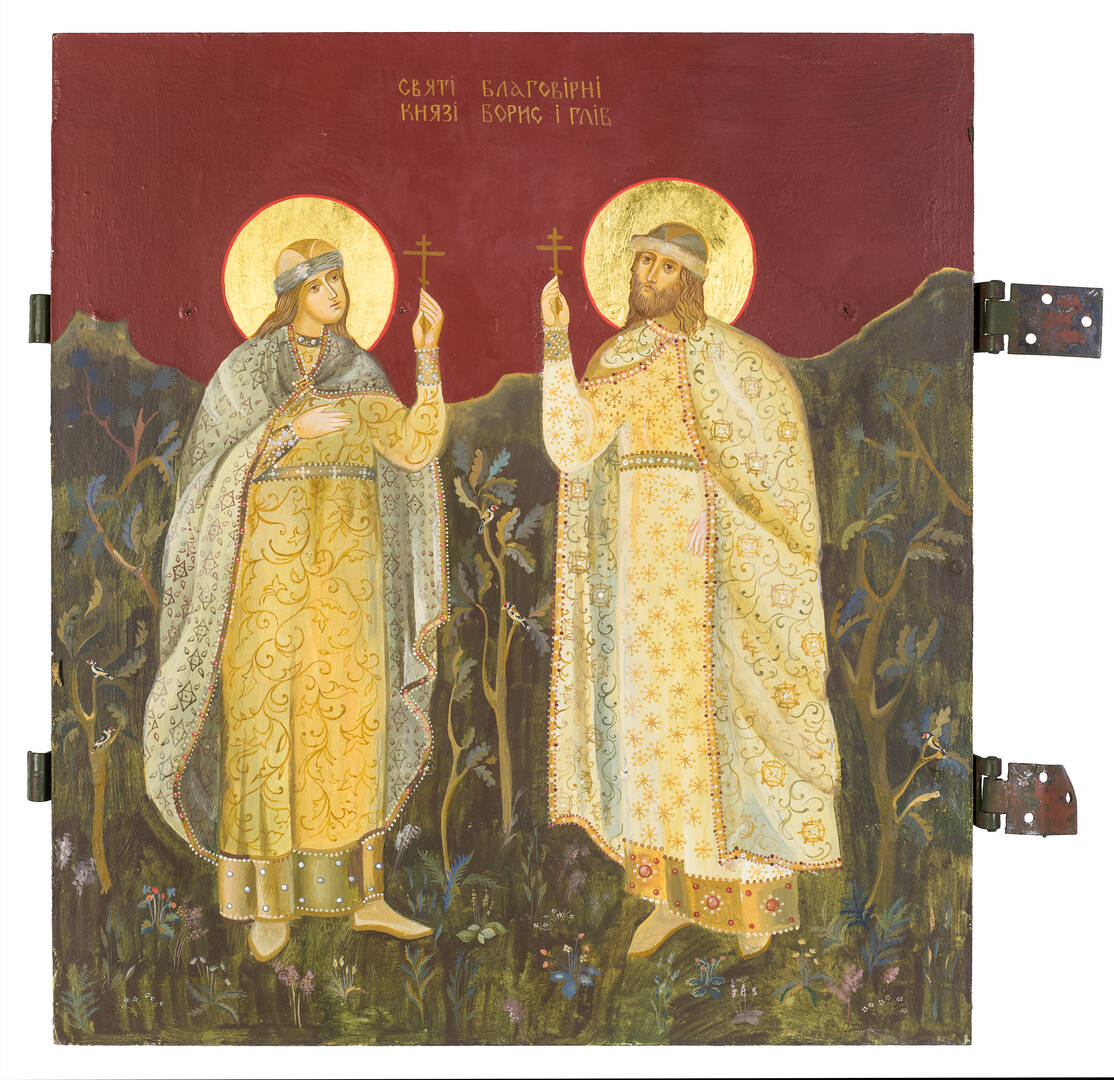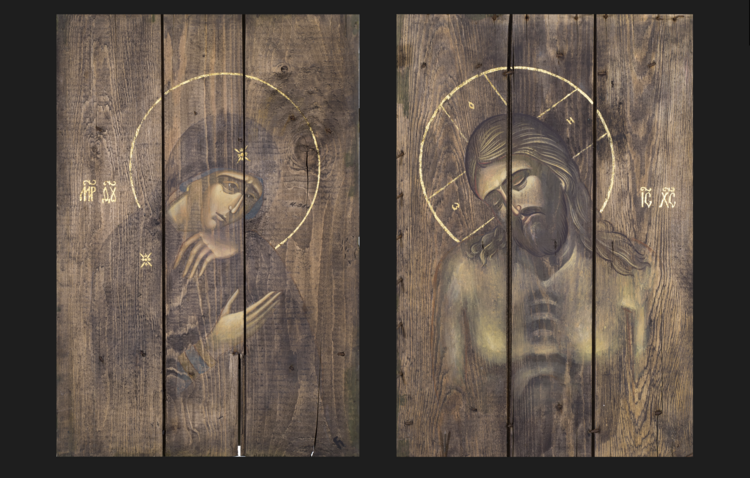In 2014, when Russian forces invaded eastern Ukraine, artist Oleksandr Klymenko traveled to the front lines to support the battalions there. While there, he noticed the thousands of wooden boxes being used to transport ammunition. What becomes of those, he asked the soldiers. “Mostly we use them as firewood,” they said. “Sometimes as simple furniture.”
Mr. Klymenko had a different idea: to use them as canvases for art. Going back to his studio that day with an empty box, he wrote an icon of the Mother of God. (In the Orthodox tradition, as explained by the American Association of Iconographers, icons are understood as “Scripture in visual form.” Therefore they are described as “written” rather than “painted.”) Even though he was the one creating it, Mr. Klymenko was nonetheless stunned by the result. “It looked so authentic,” he told me in a phone interview this week, translated by Yelena Duda and Tatyana Borodina. “I felt like it had come from a museum in Athens.”
Fifteen years earlier, Mr. Klymenko had been finishing his study at the Academy of Art of Ukraine when, as he puts it, “I fell in love with a beautiful girl.” Sofia Atlantova, who would go on to become his wife and partner on the Icons on Ammunition project, was part of a family of icon writers. “Seeing what they were doing,” he says, “I fell in love not just with my future wife but with icon writing.”
“These icons are supposed to be about showing the resurrection of peace and love and also Jesus,” Mr. Klymenko explains. “Jesus is here, and he is talking to you.”
Mr. Klymenko and Ms. Atlantova decided they wanted to use the ammo boxes to tell a story about the horror of war. They chose icons as their vehicle not only because of their personal passion for them but because they felt that icons were a language that Ukrainians would understand. The boxes, too, represented to them a sort of language: Ammunition boxes are generally stored underground, Mr. Klymenko explains, where they’re less likely to be set off and destroyed. They’re “almost like coffins,” he says. Once dug up they are a harbinger of death. In fact, Klymenko compares them to American horror movie monsters: “Zombies get out [of the earth] and kill everybody.”
To take these objects that inspire feelings of dread and paint an icon on it, is for Klymenko to transform them, indeed, to resist the very ideas that they inspire. “We wanted to create a symbol that not only fights back but defeats that death, defeats those zombies.”

To that end, the icons themselves are gentle—the Christ Child gently caresses his mother’s cheek in a gesture of consolation; Sts. Boris and Gleb, the first saints from the region, wear sumptuous golden green robes, with no sign of their martyrdoms on them. Even an icon of a grieving Mary has a softness and delicacy that belies the horror of what she is suffering. Christ in the tomb likewise has more the character of slumber than death, suggesting something more is coming.
And that is exactly the point Mr. Klymenko and Ms. Atlantova are trying to make. “These icons are supposed to be about showing the resurrection of peace and love and also Jesus,” Mr. Klymenko explains. “Jesus is here, and he is talking to you.”
Mr. Klymenko and Ms. Atlantova are also committed to making that sense of resurrection more tangible in their country, by donating sales from the icons to fund mobile hospitals, so that soldiers and civilians injured far from the nearest cities might be saved.
The way that Mr. Klymneko talks about his project in some ways reminded me of the way that we Catholics talk about transubstantiation. As we believe the Spirit of God transforms ordinary bread and wine into the body and blood of Christ, so he describes his ammunition boxes as radically transformed by the icons placed upon them.
But when I ask Mr. Klymenko—who is an Eastern Orthodox Christian—about this, he notes a key failure in my analogy. Yes, both are examples of transformation. “But originally bread is a beauty,” he says. “Bread is life. In our case [we’re dealing with] absolute death. People are dying here. We have real blood on our fields.”

Today, he notes, there are “hundreds and hundreds of wagons” filled with ammo boxes and weapons traveling across Ukraine. “There is no real word for how scary, how horrific that is.” And in the face of that, what he’s trying to capture is the greater audacity of our Christian faith. “This is more like Easter joy, Easter happiness,” he explains. “Jesus is back. The resurrection took place.”
I wondered if Mr. Klymenko also saw his icons as a statement of resistance against Russia’s clear efforts to erase Ukrainian culture. While of course hoping his art speaks to the people of Ukraine, Mr. Klymenko said he also hopes his icons can be a source of encouragement for all those who struggle. “I’m not just trying to show the position of Ukraine but to speak across all countries,” he says. His goal is “to show that this war is going to end, like any other wars. As always, evil will be defeated by God.”
“Spring is going to defeat the winter and light is going to defeat the darkness,” he tells me. “There is meant to be a democracy of love.”








